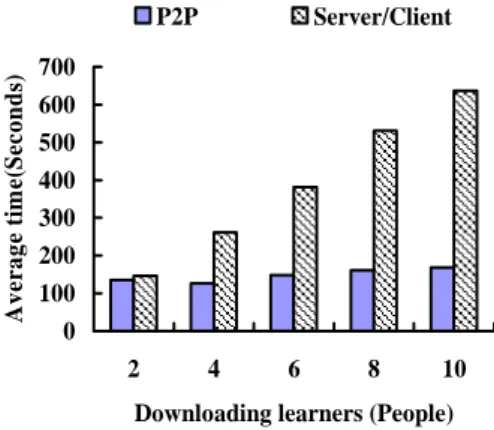SCORM-Compatible Learning Management System Based on Peer to Peer Infrastructure
全文
(2) Figure 1. The SCORM-compatible LMS. 2.1: SCORM-COMPATIBLE LMS Figure 1 illustrates an original SCORM-compatible LMS, whose components include; (1) API Instance: Provides communication functions between the learner and the LMS. (2) Tracking Service: Acquires the interaction information between the LMS and the learner. (3) Learner Profile Service: Records the personal information of the learners. (4) Course Administration Service: Provides a means for an instructor to edit and manage the courses. (5) Testing/Assessment Service: It is responsible for providing and managing the tests/assessments for the Sequencing Service. (6) Sequencing Service: Reads the sequencing rules and then determines appropriate learning content according to the learner’s status and the sequencing rules. After the appropriate learning content is determined, the Sequencing Service notifies the Content Management Service and the Delivery Service of the determined learning content. (7) Content Management Service: Responsible for managing the available learning content. (8) Delivery Service: Delivers the learning content determined by the Sequencing Service to the Presentation Browser. As depicted in Figure 1, since the SCORM-compatible LMS is based on server/client architecture, the LMS has a potential capability problem to support a large number of the learners’ access concurrently.. 2.2: BITTORRENT In this paper, a P2P application, BitTorrent [6][7][8][9], is used to develop the SCORM-compatible LMS based on P2P infrastructure. The reasons of choosing BitTorrent are (1) In BitTorrent, a tracker server is used to maintain the status of the peers and distribution content instead of the server, but does not actually deliver distribution content; (2) Multiple trackers are used to avoid being dropped from the P2P infrastructure when a tracker has a breakdown; (3) The concept of the Distributed Hash Table (DHT) is used to. search the demanded distribution content, when all of tracker servers have a breakdown; (4) BitTorrent is developed in the JAVA language environment and conforms with a SCORM-compatible LMS. BitTorrent is composed of three parts: (1) Tracker: It does not involve the actual content to be distributed, instead, it keeps meta-information about the peers that are currently active; (2) Seed: A peer that has completely acquired distribution content and continue to serve other peers; (3) Peer: A member of the currently active peer community. In BitTorrent, each distribution content is attached a torrent file that records the Tracker’s location. A peer can acquire the torrent file of the demanded distribution content and then communicate with the Tracker. Then, the Tracker provides the peer with a list of other peers and seeds. The list records which other peers and seeds keep the demanded distribution content. The peer then communicates with other peers and seeds in the list to receive the demanded distribution content.. 3: SYSTEM ARCHITECTURE To reduce the loading of the LMS, a SCORM-compatible LMS based on P2P infrastructure is proposed. Figure 2 illustrates the system architecture of the proposed P2P based LMS, whose components are divided into two parts: the SCORM-compatible LMS and the learner sites. The Components in the SCORM-Compatible LMS As depicted in Figure 2, in addition to the original components in the SCORM-compatible LMS shown in Figure 1 , the Content Test Service is added to the SCORM-compatible LMS. In addition, the function of the Delivery Service in the original SCORM-compatible LMS is modified. We illustrate the added Content Test Service and the modified Delivery Service as follows: (1) Content Test Service: Its functions include (i) Testing whether the required course and learning content exist in the Local Content Repository or not.. - 1510 -.
(3) Figure 2. SCORM-compatible LMS on P2P infrastructure (ii) Testing the version of the course and the learning content in the Local Content Repository. If the required course does not exist in the Local Content Repository or the version of the required course is not the latest version, the latest version of the course and learning content are updated instead of the old version via the Azureus P2P transmission system [10] that we will illustrate it later. If the required course exists in the Local Content Repository already and the version of the required course is the latest version, the learner can immediately access the required learning content from the Presentation Browser. (iii) Providing a waiting web page to notify the learner to wait when the required learning content does not exist in the Local Content Repository or is downloaded incompletely. (2) Delivery Service: The modified Delivery Service is responsible for delivering the path of the required learning content to the Presentation Browser. Then, the required learning content is accessed by the Presentation Browser for use by the learner.. Service, and then presents the required learning content that is accessed from the Local Content Repository. If the required learning content does not exist in the Local Content Repository or is downloaded incompletely, a waiting web page is provided by the Content Test Service to notify the leaner to wait. (3) Local Content Management Service: It is composed of Azureus P2P Transmission System, Personal Learning Content Management and LMS-Learner P2P Communication Interface as shown in Figure 3. (i) Azureus P2P Transmission System: Responsible for uploading and downloading the required learning content and courses. (ii) Personal Learning Content Management: Provides the learner a means by which to (a) Manage the learning contents and courses in the Local Content Repository and (b) view the download progress of the required learning content and courses.. The Components in the Learner Site As Figure 2 depicted, the components in the learner site include the Local Content Repository, the Presentation Browser and the Local Content Management Service. We present these components as follows: (1) Local Content Repository: Stores the courses and the learning contents that are downloaded from other learners and can be shared with other learners. (2) Presentation Browser: Receives the path of the required learning content from the Delivery. - 1511 -. Figure 3. The components of the Content Management Service in learner site.
(4) Figure 4. The procedure of the proposed LMS. (iii)LMS-Learner P2P Communication Interface: Tells the Content Test Service whether or not the required learning contents and course exists in the Local Content Repository. Figure 4 illustrates the procedure of the proposed LMS based on P2P infrastructure. The steps of the procedure are described as follows: Step1. A learner delivers the query to the LMS through the API Instance, where the query contains the learner’s personal information and current learning status. Step2. The API Instance receives the query from the learner site and then delivers the query to the Tracking Service. Step3. The Tracking Service delivers the query to the Sequencing Service and the Content Management Service, respectively. Step4. The Sequencing Service and the Content Management Service determine an appropriate learning content according to the Sequencing rules and the learner’s learning state. The aforementioned Step1 to Step4 are the same as the procedure of the original SCORM-compatible LMS. Step5. The Sequencing Service and the Content Management Service notify the Content Test Service of the appropriate learning content. Step6. The Content Test Service inquires the LMS-Learner P2P Communication Interface. whether or not the appropriate learning content exists in the Local Content Repository. Step7. The LMS-Learner P2P Communication Interface replies to the Content Test Service whether or not the appropriate learning content exists in the Local Content Repository. If the appropriate learning content exists, Step8 to Step12 are omitted. Step8. Since the appropriate learning content does not exist in the Local Content Repository, the Content Test Service starts the Azureus P2P Transmission system. Step9. The Azureus P2P Transmission system queries the Tracker to acquire the learner list. The learner list records which learners have the appropriate learning content. Step10. After the Tracker responds to the Azureus P2P Transmission system, the Azureus P2P Transmission system communicates with the learners in the learner list and downloads the appropriate learning content from them. Step11. While downloading the appropriate learning content, the Content Test Service repeatedly queries the LMS-Learner P2P Communication Interface as to whether or not the appropriate learning content is downloaded completely. If the result is negative, the Content Test Service provides a waiting web page to notify the learner that a waiting period is required. Step12. If the appropriate learning content is downloaded completely, the LMS-Learner P2P Communication Interface replies the Content Test Service that the appropriate learning. - 1512 -.
(5) The aforementioned Step5 to Step15 are different with the procedure of the original SCORM-compatible LMS. The features of the proposed LMS are as follows: (1) SCORM-compatible LMS is provided with scalability: Since the original SCORM-compatible LMS is based on server/client architecture, the task of transferring the learning content is centralized in the LMS. While, the proposed LMS is based on P2P infrastructure. Since the job of transferring the learning contents is spread to other learners, the loading of the LMS is independent of the number of learners accessing the system. Hence, the scalability of the SCORM-compatible LMS is enhanced. (2) Speed of transferring asynchronous learning content is improved in the learner site: Since the sources of transferring learning content are distributed over more than one of the learners instead of a central LMS, the speed of transferring learning content is improved. (3) Performance of reading asynchronous learning content is independent of the network bandwidth: In the original SCORM-compatible LMS, the learning content transfer rate depends on network bandwidth. In this situation, if the network is unstable, the quality of the learning environment is reduced and learner’s learning desire is negatively affected. While, in the proposed LMS, the learning content is downloaded and saved in the Local Content Repository by P2P infrastructure in advance. Hence, the performance of reading asynchronous learning content is independent of the network bandwidth. As a result, the quality of the learning environment is improved. (4) Learning content can be developed diversely in a greater range of file types and file sizes: In the original SCORM-compatible LMS, the delivery speed of the learning content depends on the network bandwidth. Hence, to reduce the delivery time of the learning content and avoid affecting learner’s learning desire, a large number of instructors select the learning content with small file size in during development. By imposing such size restrictions the learning content is frequently. limited to text files or simple graphs. In the proposed P2P based LMS, since the performance of reading asynchronous learning content is independent of the network bandwidth, the development of learning content can vary diversely as across a range of multimedia that can be more than 100 M byte to 1 G byte per file. The proposed LMS is modified from the original SCORM-compatible LMS. The specification of the course organization, sequencing rules and navigation of learning content, and communication mechanism between the LMS and the learner confirm to the SCORM CAM, SN and RTE. That is, the proposed LMS is SCORM-compatible.. 4: EXPERIMENTAL RESULTS For comparing the performance of the original SCORM-compatible LMS based on server/client architecture and the proposed LMS based on P2P infrastructure, this section presents the experiment results. The experiment parameters are described as follows: z A desktop personal computer (PC) SCORM-compatible LMS z 10 desktop PCs for 10 learners z 100Mbps upload and download bandwidth. for. a. The specifications of the desktop PCs are the same. Each are Intel CPU 3.00G, 512M Memory running Windows XP. The course to be transmitted is saved the LMS at the start of the experiment. Figure 5 shows the performance comparison between the original SCORM-compatible LMS based on Server/Client architecture and the proposed LMS based on P2P infrastructure. In Figure 5, the size of the transmission course is 700M, 1400M and 2100M bytes respectively. The data presented in Figure 5 clearly demonstrates that the average transmission time of the proposed LMS based on the P2P infrastructure is much shorter than the original SCORM-compatible LMS based on the Server/Client. P2P. Server/Client. 3000. Average time (Seconds). content is ready. Step13. The Content Test Service notifies the Delivery Service to deliver the path of the appropriate learning content. Step14. The Presentation Browser receives the path of the appropriate learning content from the Delivery Service. Step15. The Presentation Browser accesses the appropriate learning content from the Local Content Repository. Step16. The Presentation Browser presents the appropriate learning content that is accessed from the Local Content Repository.. 2000 1000 0 700M. 1400M. 2100M. The size of the downloading course (Bytes). Figure 5. The performance comparison between the original SCORM-compatible LMS based on Server/Client and the proposed LMS based on P2P infrastructure. - 1513 -.
(6) Figure 6 shows a comparison of the average transmission time when the size of the transmission course is 700M bytes for the proposed system and the client/server system. In Figure 6, the number of the downloading learners is two, four, six, eight and ten respectively. Figure 6 illustrates that the average transmission time of the proposed P2P based LMS is independent of the number of the downloading learners.. Average time(Seconds). P2P. J. Sips. “The bittorrent p2p file-sharing system: Measurements and analysis,” In 4th International Workshop on Peer-to-Peer Systems (IPTPS’05), 2005. [9] BitTorrent, web site at http://bittorrent.com. [10] Azureus, Java bit torrent client, web site at http://azureus.sourceforge.net.. Server/Client. 700 600 500 400 300 200 100 0 2. 4. 6. 8. 10. Downloading learners (People). Figure 6. The average transmission time of when the size of the transmission course is 700M bytes. 5: CONCLUSION AND FUTURE WORK This paper proposes a SCORM-compatible LMS based on P2P infrastructure to enhance the scalability and the quality of service, and share efficiently the learning resources. The experimental results indicate that the proposed LMS based on P2P infrastructure can efficiently balance the loading of the LMS. In the future, we will consider how to apply the proposed LMS based on P2P infrastructure into the adaptive learning management system.. REFERENCES [1] M.J. Rosenberg, E-Learning: Strategies for delivering knowledge in the digital age, New York: McGraw Hill, 2001. [2] Aviation Industry Computer Based Training. Committee (AICC), web site at http://www.aicc.org. [3] IEEE Learning Technology Standards Committee. (LTSC), web site at http://ltsc.ieee.org/wg12/. [4] Instructional Management System (IMS), web site. at http://www.imsproject.org/. [5] Advance distribution Learning (ADL), web site at. http://www.adlnet.org/ [6] M. Izal, G. Urvoy-Keller, E. W. Biersack, P. Felber,. A. Al Hamra, and L. Garces-Erice, “Dissecting bittorrent: Five months in a torrent’s lifetime,” In Passive and Active Measurements (PAM), 2004. [7] J. A. Pouwelse et al., “A Measurement Study of the BitTorrent Peer-to-Peer File Sharing System,” Delft University of Technology Parallel and Distributed Systems Report Series, Tech. Rep. Technical Report PDS-2004-007, 2004. [8] J. A. Pouwelse, P. Garbacki, D. H. J. Epema, and H.. - 1514 -.
(7)
數據
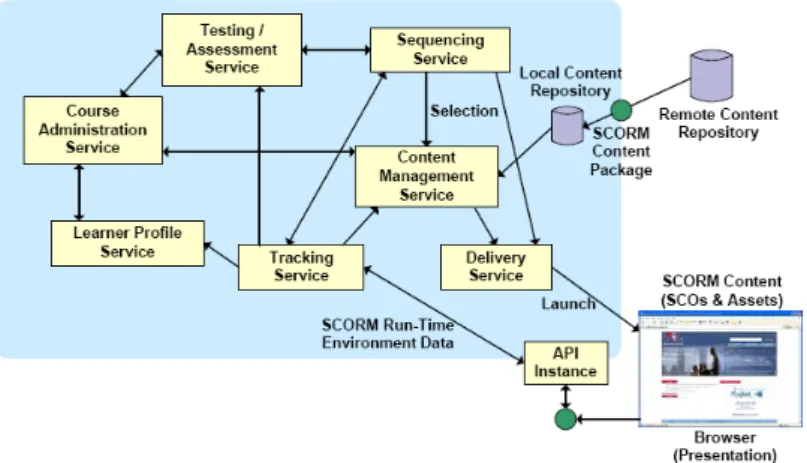
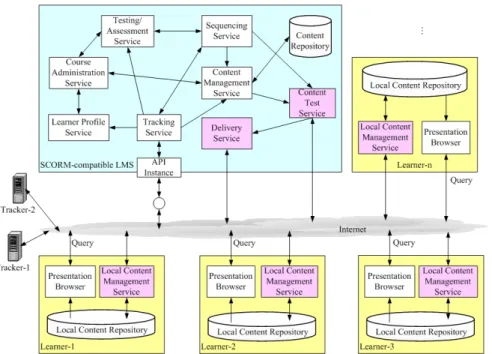
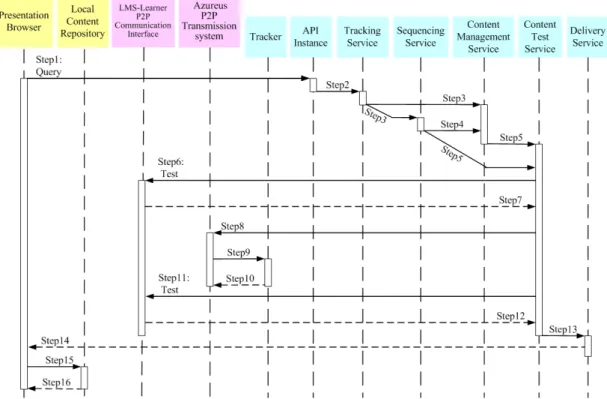
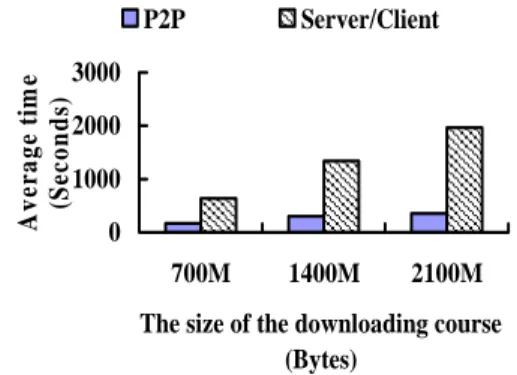
相關文件
Service learning: Connecting citizenship with the classroom. Assessing and reporting on habits
- Highlights of course content, briefing on further study pathways and career prospects - Brief introduction of the functions and required skills of public relations (PR) -
Service learning: Connecting citizenship with the classroom. Assessing and reporting on habits
Quality Assessment and Compliance – SMC/IMC composition Major observations:. SMC did not comprise all the stakeholders as managers as required in the
Internal service Quality, Customer and Job Satisfaction: Linkages and Implications for Management.. Putting the Service-Profit Chain
It’s based on the PZB service quality gap model and SERVQUAL scale, and together with the reference to other relevant research and service, taking into account
SERVQUAL Scale and relevant scales to bus service quality, and based on service content and customer service related secondary data of H highway bus service company, to design the
On the content classification of commercial, we modified a classic model of the vector space to build the classification model of commercial audio, and then identify every kind
